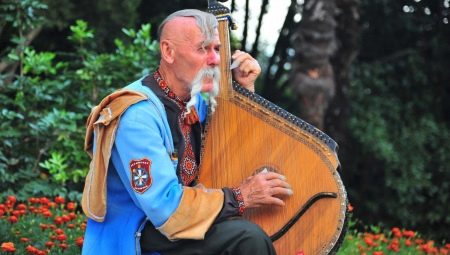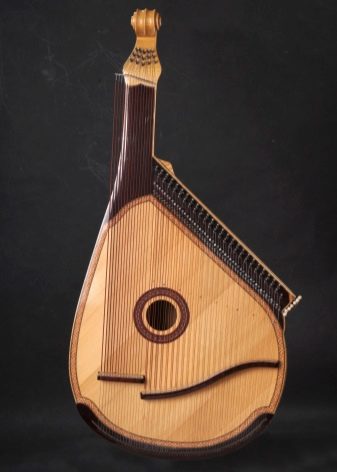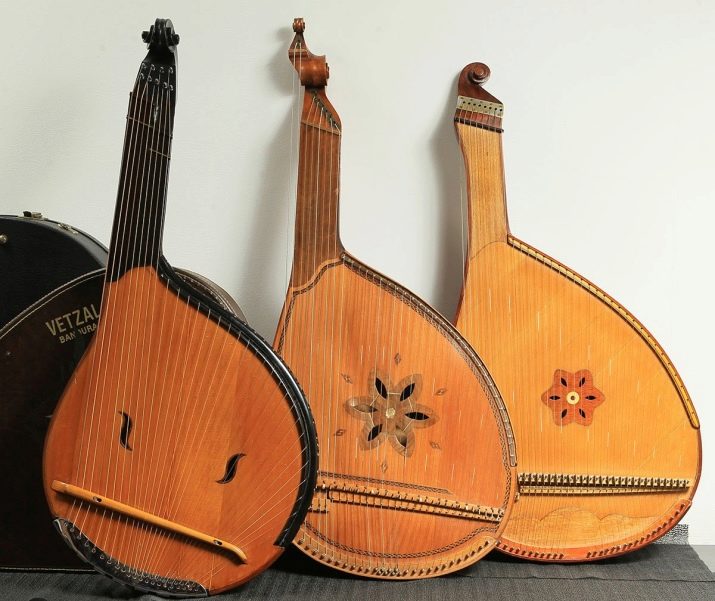What is a bandura and what does it look like?

Bandura is a plucked musical instrument widely known in Ukraine. Many have never heard of him and do not even know what he looks like, because folk music is not as popular today as it was in former times. The word "bandura" is often used figuratively and means something heavy and bulky. In this article, we will tell you about the origins of the bandura and share some interesting facts about it.


Description
Musicologists are of the opinion that this word is rooted in the Latin language. It contains the word pandura, which means the name of a small lute. This instrument differs from other strings with a short neck and an oval-shaped body. He has 8-10 obtrusive (movable) frets. The diatonic bandura is played like a harp, that is, without clamping the frets.

The modern bandura has 53 to 70 strings. The basses are located above the neck, and the rest (strings) are pulled over the soundboard, their sound is higher and louder. An even more sonorous and full-sounding timbre of the instrument is obtained by plucking the strings with special “nails” that are put on the fingers.
History of origin
On the issue of the origin of the bandura, researchers disagree. There are several versions. Some suggest that it originated from an older gusli instrument, others that from a kobza. The second version is more popular. In some places on the bandura there are the same functional names of the strings as on the kobza neck; the traditions of sound production also have a lot in common.


There is also an opinion that the Russian noblemen simply renamed the kobzu a bandura, because this word sounds more noble in the Latin manner.
Bandura was especially popular with local Cossacks and the blind. For a long time in the village people were very fond of bandura players because they could touch and cheer up with their music. The musicians sang about people's life, about national heroes, about exploits, about love and about everything that happened in their native land. All the villagers came running to listen to them. In Polish dictionaries of instruments, the bandura is called "Cossack lute".


The ancient bandurs, like the lutes, had a symmetrical shape. Gradually, the instrument was modified and changed its appearance. The strings of the veins were wrapped around with a metal braid, and their number increased. If the ancient variations of the instrument had 7 or more strings, today there may be 10 times more of them. The oldest depiction of a bandura dates back to the 12th century.

A musical educational institution where one could learn to play the "Cossack lute" first appeared in 1738; it was a music academy in Glukhov. Singers and musicians were trained here, who delighted the ears of the St. Petersburg royal court. For this, the structure of the instrument led to optimal accompaniment. This modification had 20-22 strings. The musical instrument retained this appearance until the beginning of the 20th century, after which it was modified again. Full-fledged factory production was established only in the 30s in Ukraine, although separate production workshops were already in the homeland of the instrument and in Moscow.

Also in the 30s, the Soviet authorities took a course to control the spread of Ukrainian culture. Since the restrictions on public events with performances were ineffective, violent persecution of the bandura players began. They were arrested, sent to camps and even shot. If at first musicians most often received prison sentences of several years, then in 1937-1938 their executions became widespread. The persecution of bandura players as elements undesirable for Soviet society gradually ended only after Stalin's death.
Type overview
Bandura are divided into different subspecies depending on the area where they were distributed.
Kiev
The Kiev-type instrument is made mainly at the Chernigov and Lvov factories. The authorship of this species belongs to I. Sklyar and V. Gerasimenko. It is characterized by the presence of 55-58 strings. The difference between concert models is that they have the ability to rearrange thin strings through mechanics, and the total number of strings on them is 61-65. A special mechanism is located on the top bar.

Also in a number of models of factories there are instruments for children, and Lvovskiy also produces teenage models. The Kiev way of playing implies an inclined position of the bandura and the perpendicularity of the soundboard to the performer's body. There are also workshops that produce rare models of Kiev bandura. They are located in Melnitsko-Podolsk and Kiev.
Kharkiv
Bandura developed by the Goncharenko brothers are widespread and popular here. Diatonic models are supplied with 34-36 strings. There are also semi-chromatic and chromatic instruments of the Kharkov type. Not so long ago, they tried to popularize the Kharkov version of the instrument and even modified the usual models. Instances with a total mechanical overhaul have already appeared, but until their production is on stream, the device continues to be improved.

The Kharkov way of playing the bandura assumes free play with two hands on the entire instrument. It is interesting that today the Canadian Bill Wetzal is also engaged in the revival of this type of bandura. And the American Andy Birko is working on the creation of a bandura, built like an acoustic guitar.
Kiev-Kharkov
In the middle of the XX century, there was an attempt to create the Kiev-Kharkov bandura. It was understood that the instrument of the Kiev configuration would be played in the Kharkov way. But, as it turned out in reality, it is not very convenient, so the experiment did not find support from the musicians.


Application
Today the bandura sounds in the national orchestras of Ukraine. This variation was developed by L. Gaidamaka in 1928. The range of this type is wider than that of other instruments. I. Sklyar created instruments for the Kiev Bandura Chapel - these are bandura the size of an alto, bass and contrabass. They are produced in limited quantities.


The most famous groups in the world playing the instrument are the Ukrainian Bandura Choir and the Ukrainian Bandura Ensemble of Hnat Khotkevich.
National instruments with an ancient history continue to sound today. Bandura, beloved by Ukrainians, was no exception. It is still produced in its historical homeland and continues to sound in national orchestras.










